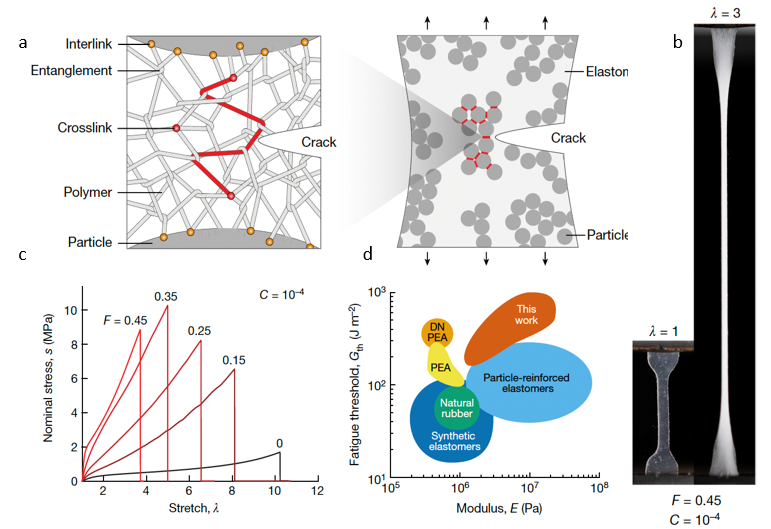Filled elastomers with enhanced fatigue resistance

Rubbers reinforced with rigid particles are used in high-volume applications, including tires, dampers, belts and hoses. Many applications require high modulus to resist excessive deformation and high fatigue threshold to resist crack growth under cyclic load. The particles are known to greatly increase modulus but not fatigue threshold. Here we amplify the fatigue threshold of particle-reinforced rubbers by multiscale stress deconcentration. We synthesize a rubber in which highly entangled long polymers strongly adhere with rigid particles. At a crack tip, stress deconcentrates across two length scales: first through polymers and then through particles. Multiscale stress deconcentration amplifies fatigue threshold by a factor of ten.
Article:
Rubber that doesn't grow cracks when stretched many times
Multi-scale approach improves the fatigue threshold of particle-reinforced rubber
Publication:
Steck, J., J. Kim, Y. Kutsovsky, and Z. Suo, "Multiscale stress deconcentration amplifies fatigue resistance of rubber," Nature 624, 303–308 (2023) ![]()
![]()
Zhigang Suo (Material Science & Mechanical Engineering)
2023-2024 Harvard MRSEC (DMR-2011754)
